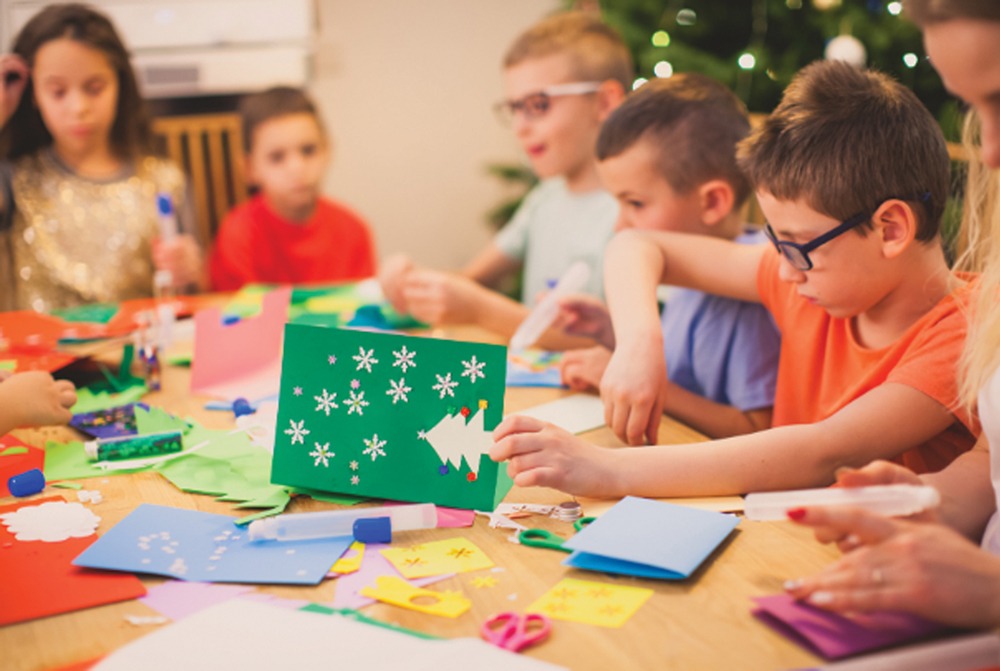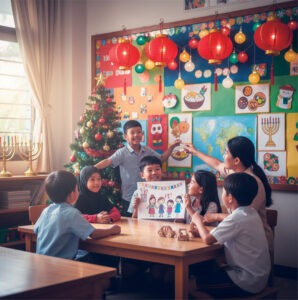Celebrating the Festive Season in a Multicultural School Community

For many families living abroad, December brings a swirl of emotions. The festive season arrives wrapped in nostalgia, tradition and memories of home. Yet in Thailand, where international communities are wonderfully varied and schools bring together children from dozens of countries, this time of year also offers something unique: the opportunity to celebrate Christmas and other seasonal traditions in a way that is inclusive, joyful and culturally rich. International schools across Thailand work hard to create this balance every year. With students representing nationalities from every corner of the globe, the festive season becomes far more than a countdown to Christmas; it becomes a celebration of community.
A Season That Means Something Different to Everyone
The first challenge, and privilege, of being in an international school setting is recognising that December holds a different meaning for each family. For some, it is a deeply religious period. For others, it is a cultural holiday centred on food, family and gifts. And for many, it is simply a special time marked by lights, music and a general sense of goodwill.
Schools aim to honour these differences without prioritising any one tradition above another; after all, Thailand is majority Buddhist but with thriving Muslim, Hindu and Christian communities, among others. The festive season becomes an opportunity to teach students about diversity, respect and curiosity. Rather than assuming that Christmas sits at the centre of the month, educators design activities and events that acknowledge a wide spectrum of celebrations, from Christmas to New Year festivals in various cultures, and even the Thai traditions that continue as usual throughout December.
 Creating an Inclusive Atmosphere
Creating an Inclusive Atmosphere
One of the simplest yet most effective ways schools embrace the festive period is through atmosphere. Children adore the sense of magic that comes with twinkling lights, themed displays and decorations lovingly assembled by teachers, staff and sometimes even parents. But the decorations in international schools tend to be intentionally varied. You may see a Christmas tree next to a display about winter celebrations around the world, or paper lanterns created by students from countries where December isn’t a major holiday at all. Classrooms often have “festive corners” where students contribute their own symbols of celebration, whether that’s a Christmas ornament, a traditional craft from home or a drawing of their favourite seasonal food. This kind of visual representation sends a powerful message: everyone belongs, and everyone’s traditions matter.
Learning Through Celebration
Many schools use the festive season as a springboard for learning. It’s a natural point in the year to explore comparative cultures, geography, storytelling and religious education, all woven into activities that feel fun and engaging.
You might see students researching how winter is celebrated in their home countries, writing reflections about their family traditions or tasting foods from around the world at a multicultural fair. Teachers often incorporate music, drama and art, allowing children to express themselves creatively while learning about the significance of celebrations elsewhere.
In Early Years and Primary settings especially, role-play and storytelling bring these moments to life. One classroom might re-enact the Nativity for cultural understanding, while next door students might explore the symbolism of light in different festivals. The aim is never to promote one belief, but to cultivate a sense of global awareness and empathy.
Events That Bring the Community Together
Community Together
International schools often act as community hubs for expat families, and the festive season is one of the rare times of year when everyone gathers in the same space. From winter concerts and charity drives to relaxed family afternoons with games and market stalls, these events help families feel connected at a time when many are far from home.
What stands out most in these moments is the sense of togetherness. Parents from different countries swap stories about how they celebrated as children. Children delight in singing songs, sometimes in several languages, without feeling the need to “belong” to any one tradition. Staff greet families warmly, knowing how important it is to recreate that familiar sense of warmth that December brings. Charitable giving is also a common thread in international schools. The festive period becomes a chance to teach students about compassion and responsibility towards others, whether through donation drives, fundraising for local causes or organising visits to community organisations.
Supporting Students Who Find the Season Difficult
It’s important to acknowledge that not all students experience the festive season positively. Some miss extended family; others may feel overwhelmed by the unfamiliarity of new customs. International schools therefore take care to ensure the season remains supportive as well as celebratory.
Pastoral teams and teachers are often particularly attentive at this time of year. They look out for students who need a little reassurance, encourage open conversations and make sure that no child feels excluded or pressured to participate in activities that don’t align with their family’s beliefs. The message is simple: everyone is welcome to join in, and everyone is equally respected if they choose not to.
Celebrating What Unites Us
 In the end, what defines the festive season in Thailand’s international schools is not a single event, tradition or holiday. It is the shared experience of celebrating together, of finding common ground amid differences. Whether families come from London, Seoul, Moscow, Mumbai or Bangkok,
In the end, what defines the festive season in Thailand’s international schools is not a single event, tradition or holiday. It is the shared experience of celebrating together, of finding common ground amid differences. Whether families come from London, Seoul, Moscow, Mumbai or Bangkok,
December in an international school setting offers a reminder that community is something we create, not something we inherit. For many expat families, this is what makes the festive season abroad so memorable. It becomes a celebration of many traditions, woven together in harmony, a true reflection of the multicultural world our children are growing up in.
By James Kemp Deputy Head of Mooltripakdee International School
